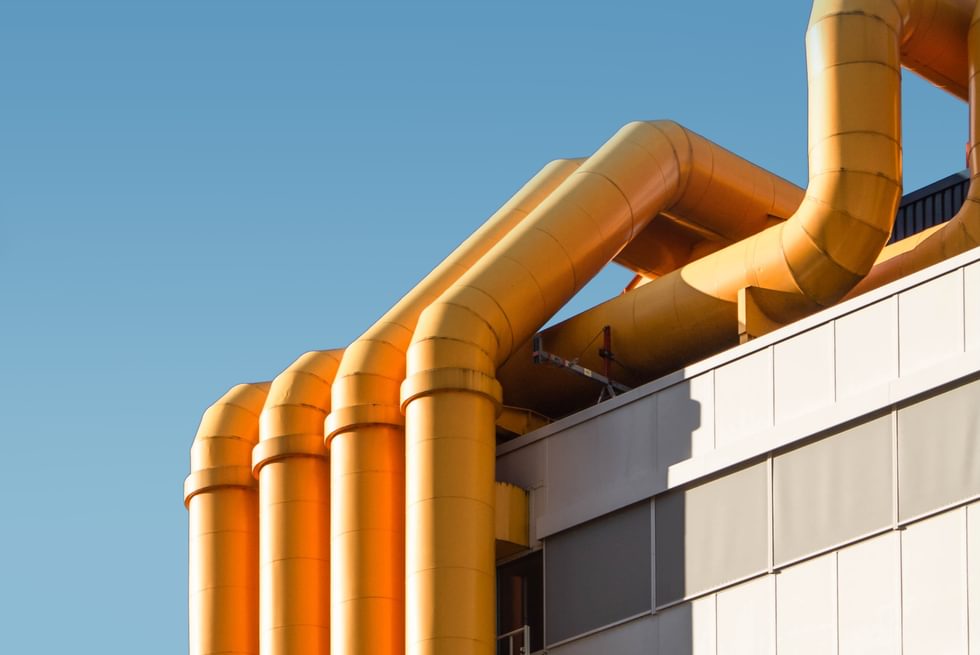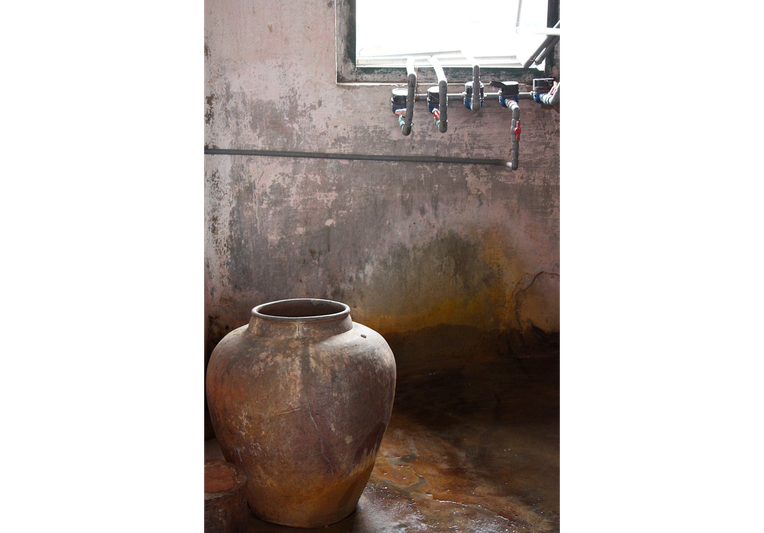Sense
From the Series: The Infrastructure Toolbox
From the Series: The Infrastructure Toolbox

“What does China smell like?” the British tabloid Daily Mail asked in a story on the installation of a “scent globe” in Heathrow Airport. The device sprays a mist of exotic smells from Asia, Latin America, and Africa concocted from local or native ingredients. Readers would have none of this sensory branding, however, particularly when it came to the “mystical temple” scent of China with its fragrant trace of sweet osmanthus. “What a loada cobblers,” wrote one commenter, charging that a more accurate representation would have been “smells of pollution, smog, [and] industrial waste.” Rather than the faint whiff of Orientalist landscapes, the pervasive scent of China is exposed as the smell of its expanding infrastructure.
In studies of modern infrastructure, scholars have commonly observed that technical systems remain out of sight, beyond everyday visual perception, until they break down or malfunction—an observation that may be more applicable to late capitalism in the global North than to other times and places. Here, however, I am less concerned with tensions between visibility and invisibility—which are better understood on a spectrum of perceptibility rooted in particular political economies (Larkin 2013, 336)—than I am with the tendency to privilege the ocular over other sensorial engagements. Rather than think along the lines of sensory deprivation, I suggest that infrastructure, broken or not, often evokes a multiplicity of embodied sensations across the human sensorium.
Encounters with the technological sublime and a sense of collective effervescence inspired by large-scale public works like dams and hydroelectric plants remind us that experiences of infrastructure are more than merely visual. They can be thunderously sonic, for example. The roaring force of water tumbling at high speeds over massive slabs of reinforced concrete is as much a part of the spectacular performance of hydraulic infrastructure as its magnificent appearance. Thus, while the senses may serve to mediate infrastructure, the meaning of infrastructure is likewise made and mediated through the senses.
On a smaller scale—in middle-class homes, for instance—the fact that infrastructure is buried underground or tightly sealed in walls does not preclude other sensory engagements. The routine sounds of flushing toilets and swooshing water indicate the functioning of both technical systems (disposing of waste) and managing institutions (maintaining a hygienic social order). The chlorinated taste and smell of tap water or the unexpected, haptic zap when plugging in appliances intuitively convey the presence of infrastructure to consumers. Even when it refuses to be seen, infrastructure is felt and embodied through overlapping sensory encounters.
The responses to the scent globe at Heathrow serve as a reminder of the stench of infrastructure—of the fact that it often stinks. Unlike sound, which reveals infrastructure at work in the world through the buzzing of transmission towers, the clamor of construction, and the din of transportation, smell is more ambiguous. The smell of infrastructure may indicate industrial productivity with the release of malodorous chemicals and pollution into the air. Or, it may be a sign of corrosion, breakdown, or disrepair (Robbins 2007, 26). There is no singular sensing of infrastructure tied to its condition of operation.
In my own field site in Vinh City, Vietnam—where the visibility of wires, pipes, cables, and ducts are testament to a historical project of socialist modernization—the collapse of infrastructure has long become part of everyday life, requiring endless improvisation. Breakdown in the socialist housing where I conducted my research generated a multisensory experience of infrastructure shared by residents across the complex. Unlike the postwar years of scarcity (with unfiltered, discolored, and foul-smelling water reaching only a few), today potable water is readily available and abundant—too abundant, in fact. Twice a day, once in the morning and again in the afternoon, the abrupt sound of water racing through the pipes signals to residents to open their valves and shut them off. As my landlord explained, a good ear can tell when a tank is near-full, when the distant echo of water filling an empty vessel begins to fade, before it spills over and inundates the unit.
Endemic leaks, breaks, and overflows allow for the experience of water infrastructure in the crumbling housing blocks to span multiple sensory domains. One might first hear (and ignore) the rhythmic drip from a cracked pipe before encountering a swelling pool of water, usually in the kitchen or toilet. Heavy rains enter homes through broken windows and doors, or openings in the ceiling where plaster has fractured and chipped away. In a tropical climate, these leaks invite the rapid growth of mold on floors and walls, greenish-brown in color and slimy to the touch. The smell of mildew permeates the apartments, especially in the dank winter months. Residents complain that the dampness can be felt in their bones—that is, they literally come to embody infrastructure decline. Older tenants, in particular, point to their debilitating health as one link in a long chain of causality leading back to cracks and leaks caused by a lack of maintenance by governing authorities.

I use this brief discussion of breakdown in socialist housing to argue for the need to move beyond the primacy of vision and visuality—in essence, to sideline Western ocularcentrism—in order to focus on broader sensory engagements with technical systems. In so doing, we are likely to encounter more diverse experiences and meanings of infrastructure in all its states of dys/functionality. Attending to the range of embodied experiences across the sensory spectrum may likewise help to produce more culturally and historically specific accounts of encounters with infrastructure, so as to better understand how people sense and make sense of their social, technical, and infrastructural worlds.